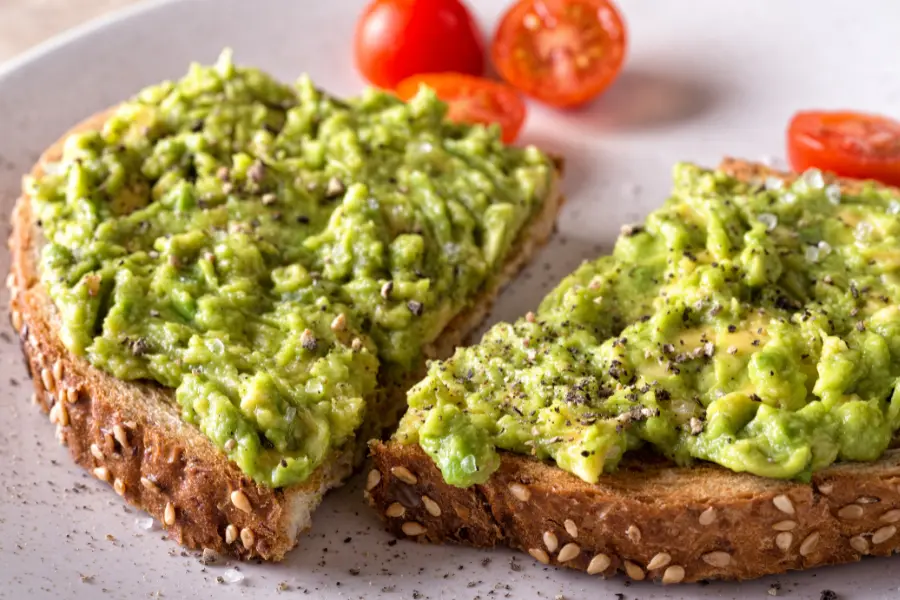Mango is one of the tastiest tropical foods that makes you happy with every bite. You can eat the fruit both when it is green or ripe. It is a good source of vitamins, minerals, and fibers. But can you eat mango skin?
Yes, you surely can eat mango skin. Mango peels are totally edible, though it has a bitter taste, and the texture is not pleasant either. Mango skin contains a good amount of fiber, along with other nutrients. You can eat the skin raw or prepare some dishes with it.
If you have not tried mango peels before, don’t worry. This article will help you in preparing mango peels for eating and tell you the benefits and other uses of mango peels.
Are Mango Skins Safe to Eat?
The first thing you need to be sure of is the edibility of mango skins. Yes, it is completely edible. It has many health benefits as well, which will be discussed a bit later. But before that, you should know that mangoes contain urushiol. This is a chemical compound which many people are allergic to.
Mango, in general, contains urushiol, including the flesh. However, the presence of urushiol in the flesh is not noticeable. It mostly stays on the skin. The good thing is not everyone is allergic to urushiol. How will you know if you are? Have you ever experienced an allergic reaction to poison ivy? If yes, then you are most likely to be allergic to urushiol, in other words, to mango skin.

How Does Mango Peels Taste?
Mango is a delicious food, undoubtedly. It is hard for anyone not to like the fruit unless someone does not like sweets at all. Are mango peels as tasty as the flesh? Unfortunately, no. Mango skin has a bitter taste. In fact, it is the bad taste of mango that keeps people from eating it.
You might not notice the bitterness of the skin when the fruit is green or unripe. Besides, you will find it difficult to swallow the skin of the ripe fruit. It has a subtle tanginess with a slightly bitter taste, along with a hint of earthiness.
Not all mango skins taste the same, though. There are different kinds of mangoes. They have different shapes, sizes, and tastes. And so are the skins. Some people enjoy the contrasting taste of mango flesh and skin, while most people do not enjoy the bitterness and astringency.
Benefits of Eating Mango Skin
As said earlier, mango skins are usually not pleasant to eat. Then, why should you consume it? Well, there are several benefits of eating mango skins. Read the following section carefully:
1. Nutrition Value
Mango is a tropical fruit that contains several vitamins, minerals, and fiber. The skin of the fruit also contains these nutrients. Vitamins C, A, and E are found in the skin. Eating the skin will ensure you are getting the most vitamins out of the fruits. It ensures the best use of your money.
2. Improve Digestive System
Mango skin is rich in dietary fiber that helps your digestive health. It aids in regular bowel movements and helps prevent constipation. If you consume the skin of the mango,
3. Preserves Your Young Lok
Mango skin contains different antioxidants, including vitamin A and vitamin C. Both these vitamins contribute to healthier skin. They promote collagen production, fight signs of aging, and protect you from UV damage. Eating mango skin regularly can help you stay younger.
4. Immune System Support
Mango skin has a high amount of vitamin C content along with other necessary compounds that can improve your immune system. They strengthen your immune system and reduce the risk of getting infected by bacteria and viruses.
5. Weight Management
Mango skin contains dietary fiber that, if consumed, can make you feel full for a longer period of time. Hence, it can help you control your appetite and food consumption. Consuming mango skin will keep you away from eating more and thus help you maintain a healthy weight.
How Can You Eat Mango Skin?
Can you eat mango skin? Yes. But how? This is the most important question you should be concerned about now. You can actually eat mango skin in different ways, depending on your personal preferences. Here are some of the simple ways of consuming mango peels:
1. Eat the Mango with Skin
A common and simple way of taking mango skin is having it with the flesh. This will also provide you with a contrasting taste of the flesh and the skin. However, you may find it difficult to eat the raw skin when the fruit is ripe. If the mango is green, then you can try this and enjoy more nutritional benefits.
2. Blend into Smoothies
Does the idea of eating raw skin sound unappealing? Okay, then, you can consider adding it to smoothies. It will cover the earthy texture of the skin and add a bitter flavor to your drink. Make sure to blend the mango thoroughly to break down the skin.
3. Pickling and Chutney
Chutneys and pickling are very common in some cuisines, especially Indian cuisine. You can eat them separately or add them to your food to make your food more delicious. Both mango flesh and skin are used to make pickling and chutneys.
These preparations balance the flavors of the skin with spices, vinegar, and sugar. The final result is a delightful and mouth watering condiment This is one of the tastiest ways of mango skin consumption.
Things You Should Do Before Eating Mango Peels
If the benefits of mango peels draw your attention, then you should remember to consume them safely. Here are some of the things you need to remember before eating them:
- Wash the mango thoroughly to remove any contaminants or pesticides on the skin.
- If you want to tear the skin apart, then you will need to choose ripe mangoes. It is difficult to peel out the skin of green mango.
- Use a clean and sharp knife to carefully remove the peel.
- You can consider cutting the skin into small pieces so that they can be easier to chew and digest.
- You should not eat too much mango skin. Excessive intake can lead to digestive discomfort.
Can I Feed Mango Peels to My Pets?
Feeding mango peels to your pets is not advisable. Although the flesh of the mango is safe for some pets, the skin is not. It contains a high amount of urushiol, which is harmful to dogs and cats. The digestive systems of humans and other animals are not the same. You may find it helpful for your digestion, while cats or dogs will find it difficult.
In addition, mango skin also contains sugar. Feeding your pets these skins will increase sugar consumption and affect their overall well-being. If you want to feed your pet mango, you should remove the pit and the skin. Pets with special medical conditions can suffer from serious issues as well from mango skin consumption.
Other Uses of Mango Skin
Even if you do not like or want to eat mango skin, that does not mean that the skin is of no other use. You can use it in many other ways. For example,
1. For Beauty and Skin Care
We have already discussed the benefits of mango peels for your skin. You can make face masks with the peels and use them directly on your face. It will delicately remove the dead skin cells from your face and improve the texture of your skin. Try blending the skin with honey or yogurt for a better result.
2. As Pest Repellent
Did you know you can also use the skin of mangoes to prevent pest attacks in your garden? Mango peels contain compounds like tannins that serve as a natural pest repellent. It will save you from applying chemical compounds and keep your garden all-natural and organic.
3. Use in Art and Crafts
You can express your creativity with dried mango skins. Add them to the potpourri mixture for a fruity fragrance. It will make your room feel fresher and natural. In some regions, mango skin fibers are used in paper production, too.
Side Effects of Eating Mango Skin
Though there are many benefits of mango skin, and you can have them easily prepared to consume, you should think again. Because there are some side effects of eating mango skin. They are:
- The tough and fibrous nature of mango skin can be difficult to digest for some people. Excessive intake can lead to digestive issues.
- Some people are allergic to urushiol. You must ensure you are not allergic to the skin before eating too many of them.
- Sometimes, the skin can contain pesticide residues and other chemicals. It will reach into your body if you eat the skin.
- Mango peels contain a good amount of natural sugar. It can harm the condition of your teeth.
FAQs
Is Mango Skin Toxic?
Mango skin, in general, is not considered dangerous to eat. However, it is, to some extent, toxic. It contains urushiol, the same chemical compound you will find in poison ivy. Some people are allergic to this compound, and consuming mango peel can make it worse for them.
What part of the mango is not edible?
Mango is a very popular tropical fruit, and you can eat both its flesh and skin. Nonetheless, you cannot, and you should not eat the mango pit. It is also sometimes referred to as the mango seed or stone. It is hard and has a woody texture, which makes it unsuitable for digestion.
Does mango take long to digest?
No, mango does not take much time to digest. Normally, a ripe mango will take 20 to 30 minutes of digestion for a healthy adult human being. The time can vary from person to person.
Is mango skin poisonous?
No, mango skin is not poisonous. However, it can cause some minor side effects and harm your health. It contains urushiol, which makes many people allergic to skin. Eating a small amount of skin will not cause any harm but rather provide you with nutritional benefits.
Can you eat mango skin while pregnant?
Neither mango nor the skin of the mango has anything to do with babies in the womb. However, the presence of sugar and urushiol can be a matter of concern. Therefore, many experts often advise not to eat mango skin during pregnancy.
Can you eat the skin of a honey mango?
Yes, you can eat honey mango skin, as well as other mongo skin. The skin of honey mangoes is thinner and less fibrous compared to some other mango varieties and, hence, have a better taste.
Conclusion
Hopefully, you have found a convincing answer regarding can you eat mango skin. Yes, you can eat. However, you should not consume them in bulk. Try the different eating habits of mango skins, and also maintain the safety steps mentioned above.



